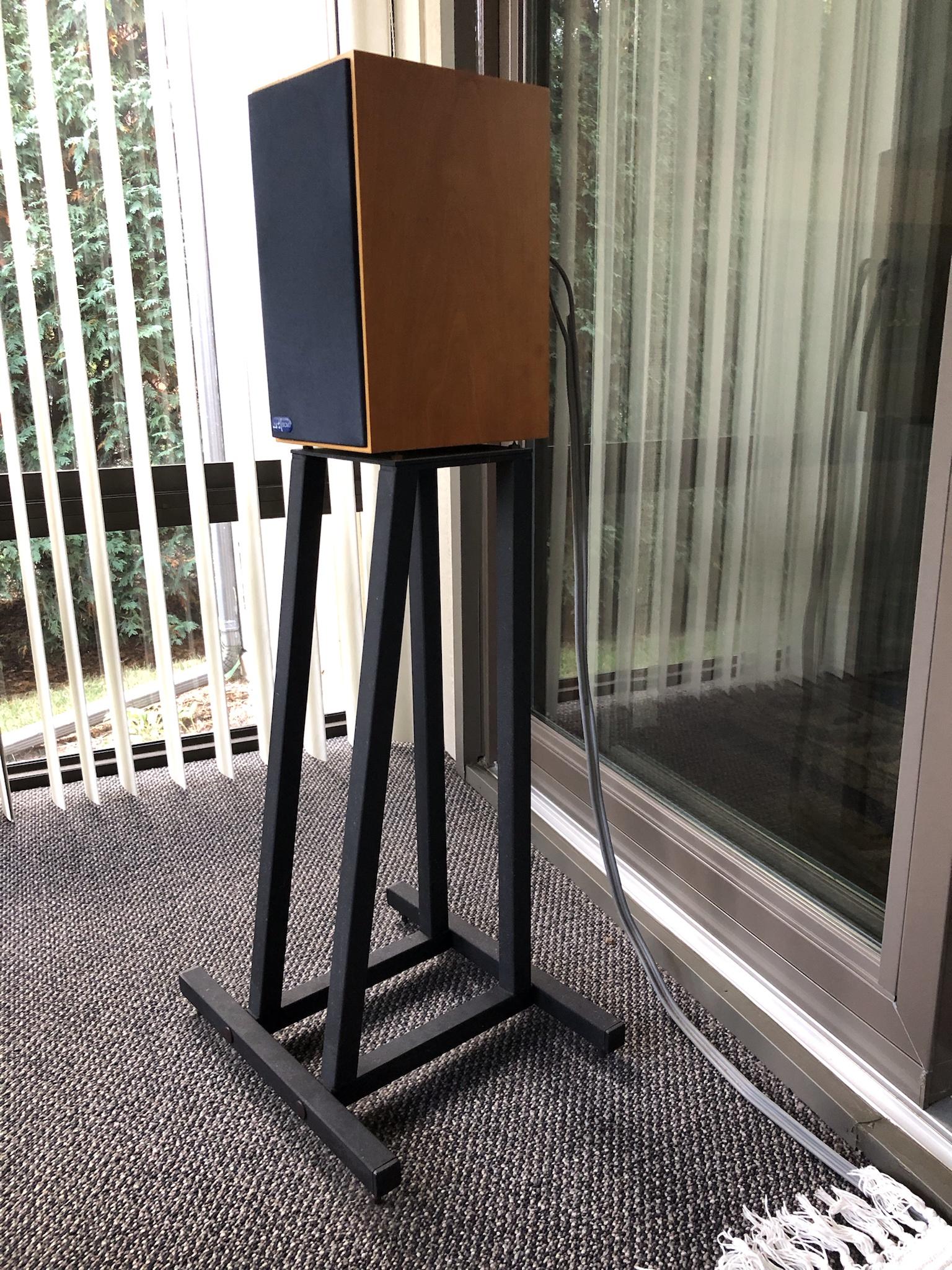adamdea
You are not a sound quality evaluation device
@Tony L is your thinking taking you towards Russ' Torlyte?
https://www.russandrews.com/torlyte-loudspeaker-stands/
https://www.russandrews.com/torlyte-loudspeaker-stands/
@Tony L is your thinking taking you towards Russ' Torlyte?
https://www.russandrews.com/torlyte-loudspeaker-stands/
Go the whole hog and suspend them from the ceiling. Bet something gorgeous could be devised.
kidding.

I’m increasingly getting an itch to try some wood speaker stands for my JR149s. A lot of what I have learned over the past 20 years or so with audio seems to come down to challenging widely accepted orthodoxy/groupthink with regards to “rigidity” (bolt tightness etc), rejecting high-mass turntables and speakers, spikes etc etc, so it strikes me it may be time to rethink my speaker stands. I currently have two pairs of very highly regarded high-mass stands; Target R4s, which are just insanely heavy, and in fairness superb with many speakers (especially little ProAcs etc). The other pair are Falcon’s own LS3/5A stands, which I’ll certainly keep for that speaker. I really like the look of the AudioChic tripods and I could custom order round tops and whatever height I liked for the 149s, plus I could put my money where my mouth was and get rubber feet rather than spikes. They are bloody expensive (especially as I’d want walnut given teak is sadly not an option), so a hell of a gamble even if I factored selling the R4s.
Basically I’m right out in theory land, I’ve never listened to this. I am convinced one of the reasons the JR149s are so bloody good is they are low-mass (compared to typical naff MDF boxes) and non-resonant, so chucking them on big heavy mass-loaded stands might not be the answer. I’ll admit there is also an aesthetic aspect here too, they’ve never looked right on boring square stands!
So, has anyone moved from metal to wood stands? The closest I’ve done is I moved from mass loaded stands to Something Solid when I had Harbeth Compact 7ES, and they certainly improved, but they are still a resonant metal stand and not as light as they look (I’m not knocking them, they are superb stands).
OREA pucks will bring a far greater sonic change than a change of stands IME. Whether Tony would like what OREA does to the presentation is of course another matter!
I think, in cases like these, it's important to consider what 'speaker stands are for. I suppose, primarily, they are to get the tweeters to ear height. Another important aspect is to stop (or reduce) swaying too and fro (Newton's Third Law of motion). Then there are vibrations to be considered.
Metal stands will (and do) vibrate in sympathy, and so will wood, to an extent depending on construction and type of wood. Most hardwoods vibrate a lot, and are not damped. And as the Rogers drums are prone to vibrating, you might consider why you like them so much. Do you want to damp them?
I have long suspected that all stands have to do is support a speaker firmly at the correct height and ensure that vibration does not travel into the floor and vice versa.
I've used wooden Ikea Oddvar stools (GBP10 a piece) for more than 10 years now to support my (2 subsequent pairs) Harbeth C7ES3
A little low (45 cm) maybe, but reasonably stiff, non resonant and not heavy weighing
Very pleased with the soundresult; easy to get an idea of the result of wood for cheap money
Yes, that is pretty much where I’m ending up, but minus the mass or metal’s tendency to ring in the audio band. I like the idea of wood as any resonance will be low-Q and well below the midband (this basically being how BBC cabinets work).
I feel that is a compromise, they like a bit of space behind them to my ears. Not anything like as much as LS3/5As, but they don’t like sitting where Kans would either. I feel 8-12” from the wall sounds about right, though I’m sure that would vary room to room.
As soon as I placed the wooden stands under the speakers I was rewarded with a more natural sound. Bass was just as deep but it was more natural and much better layered, and voices sounded a bit more natural. All in all a very worthwhile improvement to these ears.
What are those stands made out of some really dense and heavy composite wood type material? We discussed them once Tony. They’re the ones I’d like you to try!
